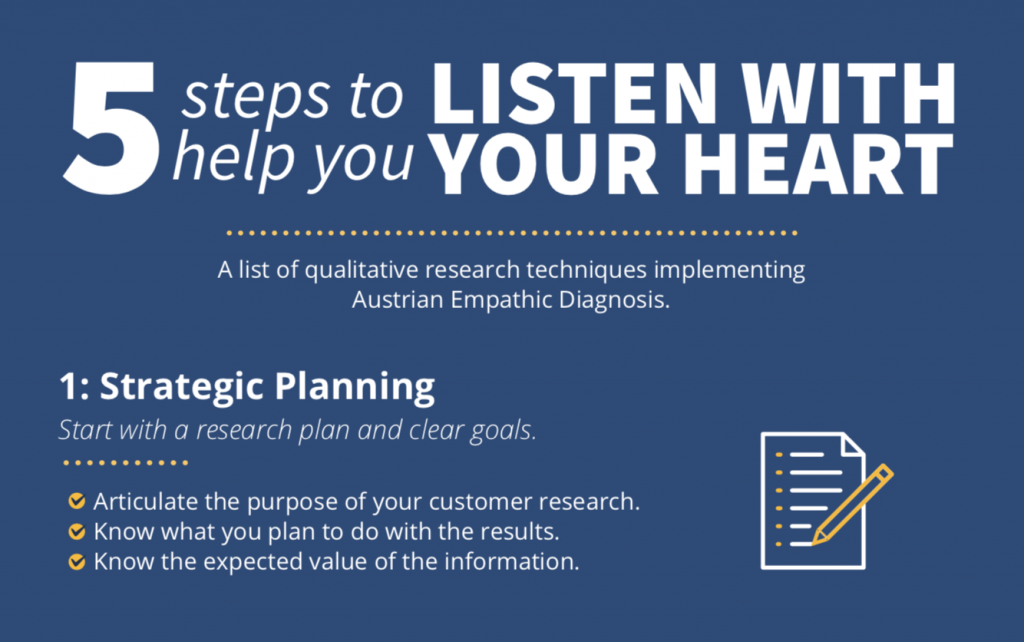98. Mark Packard’s Empathic Mental Model for Predicting Future Customer Value
Empathy, properly employed, is a robust business tool that smart entrepreneurs use to design winning value propositions.
Key Takeaways & Actionable Insights
Here’s why empathy matters for entrepreneurs.
Entrepreneurs’ success depends on what others do — those others being customers. The entrepreneur has the goal of customers buying, as a result of listening to their preferences and meeting them.
But there’s a little more work to do than just listening. As we discovered in Dr. Mark Packard’s previous podcast episodes, the customer is engaged in a continuous, dynamic, and ever-changing value learning process: learning what they, subjectively, really want. So they can’t tell you what they prefer when they are still engaged in the learning process. So listening, while useful in gathering factual knowledge, isn’t quite enough for the entrepreneur to embark upon designing a solution.
The entrepreneur must develop a special kind of “needs understanding” for their chosen customer group.
As Dr. Packard stresses — and as is foundational to the application of Austrian economics to business — the customer determines value, and that value takes the form of an experience: how customers feel about the experienced benefit of an economic exchange like buying a car, driving it, getting it serviced, and sensing the esteem of others for the choice they made.
There are two kinds of knowledge, factual and tacit. Your customers can communicate factual knowledge to you. They can’t communicate tacit knowledge, because it is derived from experiences that only they can feel.
So entrepreneurs must find a tool to represent the tacit knowledge that’s locked in the customer’s mind — a tool for “needs understanding”. The tool Dr. Packard proposes is a mental model the entrepreneur can use in the empathic process.
Importantly, empathy is not emotional mirroring — feeling what another person feels. It’s an active implementation of the entrepreneurial imagination, a cognitive act that the entrepreneur can plan and perform.
The process of modeling “needs understanding” starts with factual knowledge, purposely gathered and organized.
What entrepreneurs must pursue is deep learning about why customers feel the way they do about their experiences The goal is to gain insight in order to be able to improve consumers’ future experience. This requires knowledge-based inference from your empathic imagination about the causes of the current experience.
To do that, entrepreneurs need substantial background information—especially the personal and situational context surrounding the experience: the specifics of who, what, when, why and how. It’s not about imagining the experience of random people; it’s about learning a lot about a specific person in order to be able to successfully empathize with them.
Factual knowledge can be run through the entrepreneur’s mental model.
Once factual knowledge of the customer, their context and their current experience is gathered, the entrepreneur makes two runs of this information through their mental model. Think of it as running a simulation — a mental simulation.
- The first run of the mental model is based on the entrepreneur’s own experience. Pick an experience that you’ve had and can self-analyze, so that you have a model of what that experience feels like. Now run the information you’ve gathered about the customer through that model — what does it suggest that they might feel? For example, think of an experience that you’ve had where you bought a product you expected to enjoy, and it disappointed. What did that feel like?
- The second run of the mental model is the empathic mental model based on the entrepreneur’s understanding of the customer’s current or recent experience as told during knowledge gathering. You can understand what you felt like when a product disappointed. Now you imagine what the customer feels like or felt like as a consequence of a comparable experience.
The final step is to project the empathic mental model into the future.
The ultimate goal is to imagine what the customer’s feeling would be like in the future, following an experience with a new product or service value proposition offered by the entrepreneur. This is a projection — one that can be carefully constructed from the two previous runs of the mental model.
- Create a mental model from your own experiences.
- Run that mental model for an experience that a customer has reported to you that they have felt in the past.
- Then run a projection of that model for the new experience you are planning to offer.
The more developed this skill becomes, the more confidence you can develop in your empathic projection, and the better you will be able to evaluate the business opportunity you are imagining you will design and create, and the value the customer will experience.
Just as the customer learns what to value, the entrepreneur can learn to project future value.
Dr. Packard emphasizes that the customer is continuously engaged in a learning process — assessing value propositions, making decisions as to what to buy and what to try, then evaluating the resulting experience — was it better or worse than expected?
The entrepreneur must keep up with this learning process, monitoring the customer’s dynamic subjectivism, their ever-changing preferences amidst an ever-changing context.
By keeping up via continuous monitoring, the entrepreneur will be able to make multiple runs of the empathic mental model, and test the model results for increasing predicted value.
Free Downloads & Extras From The Episode
Empathy As A Process (PDF): Get It Here
“The Austrian Business Model” (video): https://e4epod.com/model
Start Your Own Entrepreneurial Journey
Ready to put Austrian Economics knowledge from the podcast to work for your business? Start your own entrepreneurial journey.
